
Ramaco Resources Inc
NASDAQ:METC


| US |
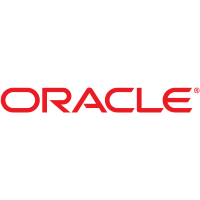
|
Oracle Corp
NYSE:ORCL
|
Technology
|
| US |
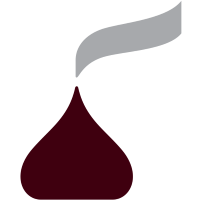
|
Hershey Co
NYSE:HSY
|
Food Products
|
| US |

|
CVS Health Corp
NYSE:CVS
|
Health Care
|
| LU |

|
Spotify Technology SA
NYSE:SPOT
|
Media
|
| US |

|
Arch Resources Inc
NYSE:ARCH
|
Energy
|
| US |

|
Nike Inc
NYSE:NKE
|
Textiles, Apparel & Luxury Goods
|
| CN |

|
Alibaba Group Holding Ltd
NYSE:BABA
|
Retail
|
| US |

|
3M Co
NYSE:MMM
|
Industrial Conglomerates
|
| US |

|
Comstock Resources Inc
NYSE:CRK
|
Energy
|
| US |

|
Verizon Communications Inc
NYSE:VZ
|
Telecommunication
|
| CN |
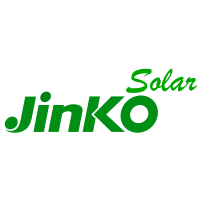
|
JinkoSolar Holding Co Ltd
NYSE:JKS
|
Semiconductors
|
| US |

|
CONSOL Energy Inc
NYSE:CEIX
|
Energy
|
| US |
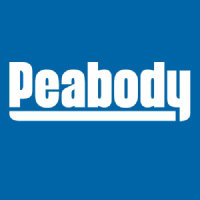
|
Peabody Energy Corp
NYSE:BTU
|
Energy
|
| IL |

|
Nano Dimension Ltd
NASDAQ:NNDM
|
Technology
|
| US |

|
Booking Holdings Inc
NASDAQ:BKNG
|
Hotels, Restaurants & Leisure
|
| US |

|
Netflix Inc
NASDAQ:NFLX
|
Media
|
Utilize notes to systematically review your investment decisions. By reflecting on past outcomes, you can discern effective strategies and identify those that underperformed. This continuous feedback loop enables you to adapt and refine your approach, optimizing for future success.
Each note serves as a learning point, offering insights into your decision-making processes. Over time, you'll accumulate a personalized database of knowledge, enhancing your ability to make informed decisions quickly and effectively.
With a comprehensive record of your investment history at your fingertips, you can compare current opportunities against past experiences. This not only bolsters your confidence but also ensures that each decision is grounded in a well-documented rationale.
Do you really want to delete this note?
This action cannot be undone.

| 52 Week Range |
9.25
22.4
|
| Price Target |
|
We'll email you a reminder when the closing price reaches USD.
Choose the stock you wish to monitor with a price alert.

|
Oracle Corp
NYSE:ORCL
|
US |

|
Hershey Co
NYSE:HSY
|
US |

|
CVS Health Corp
NYSE:CVS
|
US |

|
Spotify Technology SA
NYSE:SPOT
|
LU |

|
Arch Resources Inc
NYSE:ARCH
|
US |

|
Nike Inc
NYSE:NKE
|
US |

|
Alibaba Group Holding Ltd
NYSE:BABA
|
CN |

|
3M Co
NYSE:MMM
|
US |

|
Comstock Resources Inc
NYSE:CRK
|
US |

|
Verizon Communications Inc
NYSE:VZ
|
US |

|
JinkoSolar Holding Co Ltd
NYSE:JKS
|
CN |

|
CONSOL Energy Inc
NYSE:CEIX
|
US |

|
Peabody Energy Corp
NYSE:BTU
|
US |

|
Nano Dimension Ltd
NASDAQ:NNDM
|
IL |

|
Booking Holdings Inc
NASDAQ:BKNG
|
US |

|
Netflix Inc
NASDAQ:NFLX
|
US |
This alert will be permanently deleted.
 Ramaco Resources Inc
Ramaco Resources Inc



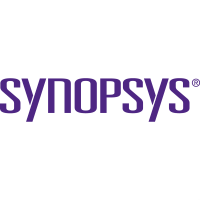

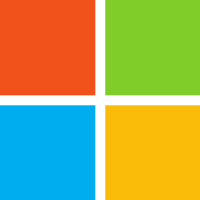
 You don't have any saved screeners yet
You don't have any saved screeners yet

Welcome to the Ramaco Resources Second Quarter 2023 Earnings Conference Call. At this time, all participants have been placed in a listen-only mode, and the floor will be open for your questions following the presentation. [Operator Instructions].
I would now like to turn the call over to Jeremy Sussman, Chief Financial Officer. Please go ahead, sir.
Thank you. On behalf of Ramaco Resources, I would like to welcome all of you to our second quarter 2023 earnings conference call. With me this morning is Randall Atkins, our Chairman and CEO; and Chris Blanchard, our Chief Operating Officer. Before we start, I would like to share our normal cautionary statement. Certain items discussed on today's call constitute forward-looking statements within the meaning of the Private Securities Litigation Reform Act of 1995.
These forward-looking statements represent Ramaco's expectations concerning future events. These statements are subject to risks, uncertainties, and other factors, many of which are outside of Ramaco's control, which could cause actual results to differ materially from the results discussed in the forward-looking statements.
Any forward-looking statements speaks only as of the date on which it is made, and except as required by law, Ramaco does not undertake any obligation to update or revise any forward-looking statements, whether as a result of new information, future events or otherwise.
I'd also like to remind you that you can find a reconciliation of the non-GAAP financial measures that we plan to discuss today in our press release, which can be viewed on our website, ramacoresources.com. Lastly, I'd encourage everyone on this call to go on to our website and download today's investor presentation under the Events Calendar.
With that said, let me introduce our Chairman and CEO, Randall Atkins.
Thanks, Jeremy. Good morning to everyone, and thanks for joining the call. We have a lot to cover this morning since we last spoke in May. First, during the second quarter, we announced two potentially transformative milestones. In early May, we disclosed that our Brook Mine near Sheridan, Wyoming, may contain the largest known unconventional and positive rarer of elements in the United States. In late June, our tracking stock, which we call core resources, began trading under the ticker symbol METCB and will pay its first dividend next month.
As an aside, CORE stands for Carbon Ore-Rare Earth, which describes some of the unique asset classes included in the stock. We felt that these assets might trade above levels of the typical operating company because of a combination of a lower risk profile on the fixed income side, combined with a higher potential return profile from assets like rate earth.
CORE is now trading roughly 65% higher than issue, at a roughly 16 times EV/EBITDA multiple and with over a 6% yield. This compares to METC shares, which still trade inline with our coal peers at around 2 times to 3 times EV/EBITDA. And overall, the issuance of the tracking stock has increased our combined market cap of these two stocks by about $120 million or almost 30%.
It goes without saying that, we are gratified with the support investors have shown for this security
in the early dawn. To expand on the REE front, earlier this week, we reported that our Board had approved development mining to start on our Brook Mine project this fall. Our initial efforts will be to recover larger quantities of material that we can chemically analyze to determine the most effective processing, separation, and recovery techniques.
This first step does not require large levels of spend, which we had budgeted at $2.5 million over two quarters. This is significant on many fronts. But most importantly, because this is the first new rare earth mine in the U.S. in decades, actually starting to mine, a number of other projects, basically all involving REEs found in hard minerals, are in various states of prospecting or testing, but we are not aware that any have been permitted. Having taken eight years to permit the Brook Mine, we can attest that permitting is no easy step. It provides us an ability to materially be further down the runway in terms of moving the project into reality.
We also noted that our current rare earth exploration target is up 50% from our initial estimates in May. So over 1 million tons of TREOs. We expect this target size may increase as we continue more coring and chemical analysis. But even at this size, it seems to contain many decades of REE supply to satisfy almost all current domestic demand. Based upon our ongoing work with Weir and NETL, we believe that almost 30% of the deposit contains magnetic REEs. These are the particular elements that are critical to both the defense electronics as well as the energy transition for wind and solar.
From limited samples of coring, we have also found large quantities of the two recently banned minerals by China, named Gallium and Germanium. We are currently doing larger-scale testing, specifically on those two minerals, and will include results in our next update.
As a reminder, today almost all REEs are imported from China. We hope to be the only completely both made in the USA banned in industry. Lastly, we have engaged recently a number of consulting groups, specializing in REE assessment, separation, and recovery technologies. This includes a well-known group in this space SRK Consults. Together these group along with NETL will enable us to complete an initial economic analysis in Prefeasibility study. We hope to have initial findings to report before year-end, and we will provide some guidance on the economics and timing of developments.
Now, turning to our core met coal operations. This past quarter, the whole industrial faced a number of combined challenges. We saw continued price declines, overall softer market conditions, steel prices hitting lows, and ongoing inflationary pressures.
In our investor presentation, on the website and accompanying this quarter's earnings on Page 14, we compared how the public groups have reported so far. Earnings from all our peers have clearly reflected this difficult environment. For all reported metallurgic coal companies this quarter, EBITDA fell on average 42%. We fell 38%. Average peer group mine cost increased by 4%, the same as Ramaco.
In general, this was a tough quarter all around, and we do not want to make excuses, but I would also note that this quarter we were again plagued by non-performance by our rail partners. In the month of June, both Norfolk Southern and CSX failed to deliver over 80,000 tons of contracted shipments, which was over 10% of tons sold during the quarter. This set us back $11 million of EBITDA, which rolls forward when they performed in July.
On the pricing front, U.S. high-vol A/B indices average 25% less in the second quarter compared to the first. They prices are down another 10% from the second quarter. The same time U.S. inflation of almost 5% in the second quarter, while this is down from a year ago, it has continued to put pressure on the supply chain. These pressures are, of course not specific to Ramaco. I would point out, however, that when you see margin compression across the industry, Ramaco's first quartile low mind cost profile combined with our limited ARO exposure, puts us in a strong relative position.
On the marketing front, we have now contracted 3.1 million tons or 95% of our ‘23 forecasted production of this amount, over 70% or 2.2 million tons is fixed price business and an average net back of $188 per ton. The balance is priced against a floating index. Today we have roughly 400,000 of uncommitted tons remaining to place before year-end and 900,000 of committed, but unpriced tons. While worldwide benchmark pricing continues in a summer seasonal wall, our strong contracted position somewhat insulates Ramaco a bit more than those in our peer group with larger open positions.
Looking at the second half of 23, we see some positive company specific catalysts on the horizon. The first section of the Berwind mine continues to increase current production. The second section is set to begin production before the end of the month. Similarly, production from the Maben Surface and highwall mines continue to grow in line with expectations.
In late July, after a shakedown period, the Elk Creek Prep plant reached full processing capacity of 3 million tons, up 50% from its former nameplate of 2 million tons. Finally, by the fourth quarter, we should be running at over a 4 million ton per year annualized production and sales rate in the coal space. As we all know, we cannot control price, but we can arguably control production growth and company specific costs.
As mentioned in the back half, we look forward to an increase in both net production and processing throughput capacity. As a result, we hope to see costs come down, both by being spread across a larger number of produced tons, as well as by taking some affirmative cost control measures, which Chris will comment on.
On the Brook REE front, we look forward to starting our development mining in a few months. We are positioning ourselves to try and take advantage of this unique opportunity and look forward to updating everyone as this potentially transformative project unfolds. And with this mine, as time goes by, we hope to position ourselves as both a growing low-cost met coal as well as Rear Earth producer.
With that, I will turn the floor over to the rest of the team to discuss more details on finances, markets, and operations. So, Jeremy, please start with a rundown on our financial metrics and markets.
Thank you, Randy. As you noted, the second quarter was challenging across the board to the industry as a whole, as everyone has no doubt, already heard from our peers. In fact, I would point to Slide 14 that shows our closest peers saw Q2 EBITDA declined by over 40% on average versus Q1, having missed consensus by over $30 million on average. Our second quarter net income of $8 million was down $18 million from the first quarter of 2023. Diluted EPS of $0.17 was down $0.40. Adjusted EBITDA fell to $30 million versus $48 million in Q1.
As noted in our press release, Q2 net income, EPS, and adjusted EBITDA were negatively affected by $9 million, $0.19, and $11 million respectively due to rail transportation non-performance issues. Roughly 85,000 tons that were contracted to shipped during the last week of the quarter, were pushed to July by CSX. Relative to first quarter metric the largest variance was on realized price which fell 12% to $163 per ton. U.S. high Vol A indices averaged 25% less in Q2 compared to Q1. Currently, prices to date in Q3 are down more than 10% from the Q2 average.
Overall production of 876,000 tons in Q2 was a quarterly record, up 5% compared with Q1 due to new mines ramping production. Total sales volume of 715,000 tons was down 6%, compared with Q1 due again to the aforementioned transportation issues.
Company produced cash mine costs were 4% higher than in Q1. The increase in costs was largely due to continued inflationary pressures, as well as the inventory build on the back of rail issues. Specifically, cash cost per ton sold of a $109 came in much higher than cash cost of production of a $103 per ton. Looking ahead, we are adjusting our 2023 guidance with an expectation that Q4 will be much stronger than Q3, with sales that will annualize to over 4 million tons in Q4.
Naturally, that is expected to have a strong positive impact on both lower costs and stronger cash flow as we work down inventory. For Q3, sales expected to 700,000 tons to 900,000 tons. While we are not in the business of predicting pricing, if indices remain at current levels for the duration of Q3, we would anticipate realized pricing to fall roughly 12% to 15% from first-half levels of $174 per ton.
Our solid contracted book certainly insulates us from a portion of the decline in index pricing. We would also anticipate Q3 cash costs to be similar to Q2 levels and then declining in Q4 as sales volume increases. For full-year 2023, production guidance is updated to 3.0 million tons to 3.5 million tons from 3.1 million tons to 3.6 million tons, driven by the idling of our Triple S mine due to market conditions.
This will drop production by roughly 100,000 tons. Given the limited mine life of Triple S, anticipated production beyond 2023 is relatively unaffected by this action. 2023 sales guidance is updated to 3.1 million tons to 3.6 million tons from 3.3 million tons to 3.8 million tons still representing a 40% increase versus 2022 sales. 2023 cash costs are now expected to be $102 to $108 per ton up from $97 to $103 per ton, largely due to the combination of continued inflationary pressures and higher than anticipated costs during the ramp-up phase at our Berwind complex.
Lastly, we now anticipate a lower 2023 CapEx of $60 million to $70 million versus $65 million to $80 million previously. As Randy noted, a major highlight for us this past quarter was at our tracking stock core resources ticker METCB began trading in late June and has enjoyed a strong market reception.
The board recently approved the payment of the initial core dividend in Q3, which is based on Q2 results. Clearly, we were disappointed with the fact that we weren't able to ship 85,000 tons due to transportation issues. If these had shipped as contracting, the tolling income that our core resources dividend is based upon would have been materially higher.
While this concludes my financial remarks, I'm now going to give a brief sales and marketing update. By challenging market conditions in Q2, Jason and his team continued to do an excellent job placing tons into both new and existing customers. The majority of near-term demand continues to center around Asia, where netback pricing is typically lower than in our more traditional markets.
As you probably know, the annual domestic contracting season is upon us with most of the domestic steel mills out per -- for calendar 2024 contracts. Given that we are in the midst of these negotiations, we are not going to comment on any specifics here.
In terms of the overall market, while demand remains relatively tepid, I would remind everyone that supply also remains quite subdued. Global coal CapEx remains just a fraction of what it has been historically given increased financing, permitting and overall ESG challenges, barriers to entry into the coal space have never been higher.
In addition, we have seen a number of high cost operations around us either close or cut their workforce materially resulting in lower production. Interestingly, this is occurring when Australian pricing has generally remained between $200 and $250 per metric ton over the past few months. We believe the cost curve has become meaningfully steeper in recent years on the back of strong global inflation. Indeed, a number of higher cost operations are currently underwater even at today's prices. Amid this supply demand backdrop, we will look to continue to execute on new sales as we grow production.
With that said, I would now like to turn the call over to our Chief Operating Officer, Chris Blanchard.
Thank you, Jeremy. As both Jeremy and Randy have noted, two of our largest milestones in our multi-year growth progression largely ended in the second quarter and will be completed a hundred percent this quarter. As we discussed on our last call, the idled Berwind mine, we started development mining last quarter. The first section has progressed according to our projections and sloped down into the Pocahontas number four seam in early July.
Final slope work is ongoing and will be completed during August and this mine will move out of development mode. At that time, the section will have reached the heart of the reserve area and we will also be moving onto our fee coal position to further reduce our costs there. We have also begun the redeployment of manpower and equipment to start the second production Berwind section, which will also be ramped up during the third quarter.
This section will start in full [indiscernible] and will not have any development mining, just the typical production ramp-up period. Supporting the Berwind Mine, we also completed two exhaust ventilation shafts during the second quarter. We completed all of the fan upgrades, which we believe eliminates any future risks of lightning related admissions, similar to the one-off accident which occurred last July.
As the Berwind Mine continues to ramp up its production, we will work for opportunities to take advantage of its geologic and logistical advantages. This may involve further rationalizing higher cost production and moving man power equipment to Berwind Mine as additional mining areas become developed and available.
Turning to Elk Creek. The upgrade to the preparation plant is largely complete in June. While we are finishing some of the last, forward items on the upgrade, the full capacity feed rate has been reached and the plant balanced. It ran through its ramp-up and conditioning stages during June and early July.
While the plant upgrades ended up being delayed by over two months due to equipment delivery delays, during the month of July, we managed to hit our full processing budget on a raw tons per day basis as well as total raw tons for the month. Going forward, we expect that mine production and processing capabilities at Elk Creek will be more evenly matched and that we will begin to work through the -- raw coal on the property and monetize them.
Equally important from a cost perspective, the Elk Creek mines continue to produce well and the upgraded plant throughput will eliminate downtime and mix shifts due to stockpile levels. It should also eliminate substantial trucking and rehandling costs associated with inventory in the lost coal, which we did during the first half of 2023.
Lastly, the -- surface and Highwall mine began production last quarter and is now fully staffed and fully ramped. We have seen favorable mining conditions thus far and production has exceeded our original projections. The coal quality has also been as good as anticipated. -- largest projects '23, largely in our rearview mirror, we are pivoting to growing the production of our existing mines and optimizing and reducing our mine costs.
We are working hand-in-hand with our rail and transportation partners to increase and streamline coal deliveries alongside the ramp at these complexes. We expect to be producing at approximately a $4 million to $4.5 million clean tons per year production rate as we enter 2024 and look to position ourselves as amongst the lowest cost pure play and metallurgical producers.
This now concludes management's prepared remarks. And now I would like to return the call to the operator for the Q&A portion of the call. Operator?
[Operator Instructions]. And our first question comes from Lucas Pipes with B. Riley.
Thank you very much. Good morning everyone. My first question is on pricing and the current market environment. Jeremy, if I heard you right, you mentioned that, pricing would be down 12% to 15% from first-half levels if current prices hold for kind of the remainder of the year. And I guess I could back into it, but wasn't able to do it so quickly here on the call. But kind of what does this assume for net back prices on kind of unpriced hunts for the remainder of the year? Thank you, very much.
Thanks, Lucas. So, first, just slight correction is, so that would be the Q3 net back. I'd say, there's a couple things going on there. As we mentioned in our prepared remark, demand right now is certainly strongest in Asia compared to elsewhere.
And so, I'd say first and foremost, that assumes that that's where a good chunk of the spot tons go. Secondly, in terms of our contracted position, we've got a very nice contracted book. I'd say it's a little bit more weighted both in terms of volume and certainly price on the high side towards Q4 versus Q3.
So, I'd say those are sort of the nuances in there, but I would point out that obviously even a low double-digit percentage decline in realized price in Q3 is certainly better than what the index currently would point to if we were selling everything against the index. So, I'd also say that does point to certainly having a relatively strong contracted position.
That's helpful. And Jeremy, can you remind us kind of what the net back price would be on average in today's environment?
So, look, I mean, if you're talking flat to the index, I mean, let's call it for a high-vol A/B that's about a $200-ton index. So, if you're getting kind of flat to the index that's 140 ish on new business, again, you're going to have to take some degree of the freight differential into Asia. So, kind of depending upon where freight rates are, you'd certainly put that on top of any or you'd back it out, I should say, from any index price.
Got it. Thank you, so much for that detail. My second question is about the rare earth opportunity and two questions there. The first is in terms of the initial assessment and economic analysis, when would you expect that to be completed? Good to see that you hired contractors on that front and the $2.5 million that you are allocating towards the mine startup. What sort of equip, I assume that's going towards equipment, but maybe that's wrong and if it is equipment, is that mobile equipment plant property plant and equipment just a little bit of color on where the $2.5 million would go to get a little bit of a sense of the development cadence?
Sure. So, I think, to answer your first part of your question, the economics, and of this project are basically largely derived from the processing and separation techniques. As you know, Rare Earth is measured in parts per million at least in the sense of coal.
So, we have to determine what exactly is going to be the appropriate processing technique that will happen on a sort of sequential basis. As we basically analyze larger amounts of material, we'll get a pretty good sense of that particularly as it relates to sort of the chemical qualities of some of the material, whether it's ionic or not, which has a large determination on the processing approaches.
I would say within, we give ourselves probably less than a six months period to get some good initial results. But I would say, I would expect probably more like a nine months period before we would get really definitive results. And as far as the mining is concerned, I'm going to let Chris speak to that. But really most of the spend is not on equipment per say, because we may start on some of that with contractors. Chris?
Thank you, Randy. And Lucas, it's that $2.5 million will start being spent probably in early October, and then run through into the first quarter of next year, but it's largely on development CapEx, putting in the sediment control of the roads, to the permitted area for the initial pit. It will also include the excavation of a small area in the initial permitted area for the testing and larger bulk samples that Randy has referenced.
Okay. That's really helpful. I really appreciate all the color and detail. Best of luck. And thanks very much. I'll turn it over.
And our next question comes from Nathan Martin with The Benchmark Company.
Thanks, operator. Good morning, guys. Thanks for taking my questions. Maybe I will start with, you guys mentioned the idles, the Triple S Mine, due to market conditions there. We have seen some other Ramaco mine idlings analysis, I think, Jeremy, you referred to in your prepared remarks. But if U.S. indices kind of stay at these levels. As you pointed out, they have been kind of moving in the opposite direction from Asian indices, at least here to start the quarter.
Do you think we could see more idlings? Again, assuming most of these are related to inflationary pressures we have seen on costs, so it would also be great to get your thoughts on where do you think the price of that marginal ton is today?
Yes. It's a great question, Nate. So, I mean, clearly, with the $200 high-vol A/B average, the fact that, you are seeing, idling or layoff and whatnot tells you that, the cost curve has moved materially higher. So, I mean, I think the answer is, we are already seeing, certainly some mines either get idled or see their workforce reduced. And I think that will continue. I mean, keep in mind, a number of probably high cost operations are being propped up by a strong 2023 contract book that rolls off, obviously, at end of this year.
And we will see what '24 pricing looks like. But again, I'd say, in the absence of some of those stronger contracts, you will certainly see some mines that have been around sometime probably idle. And I'd also remind you that, from our perspective, every one of the minds that we have is not in place before 2017. Obviously having a newer fleet of mine certainly puts us in a very, very good relative position, as Randy pointed out on the overall cost curve. So at least from our perspective, I'd view Triple S as a one off.
And actually, this put in place largely as a precursor to a Berwind operation. We actually did that after the Berwind mine went down, if I recall. So, the essentially, we will be moving manpower and equipment from Triple S into the Berwind.
That’s helpful guys. Appreciate that. And then maybe related to your costs specifically compared to the $109 you guys reported where do you think cost a ton would've been in the second quarter? Had you been able to ship those roughly 85,000 tons that slipped the July? Is that the $103 per ton cost of production? I think you mentioned, and you also said you expected 3Q costs to be roughly flat, quarter of a quarter. Should we be using that cost of sales of $109 as a base or the cost of production of one or three? Just to be clear there.
No, it's a good question, Nate. So, I mean, we shipped 715,000 tons and obviously we produced about 150,000 tons more. So, I'd say, had we shipped the 85,000 tons our cash cost to sales would've been pretty darn close to that 103 number, maybe not exactly, but within a dollar or two of that figures. And as it relates to Q3, I would, use the 109 cost of sales. Keep in mind, you've got a couple of things going on. Obviously, you've got the vacation week, which increased costs.
But both Chris and Randy referenced Berwind is clearly the first section will be finished in development mode later on this month. The second section will begin to ramp. So, really by the time you hit Q4, I mean, we expect Berwind at least the two main sections to be running sort of on a normal operating basis. So, by the end of the year, I would expect our costs to be sort of at or below a hundred bucks a ton. And that's probably the exit rate I would use into next year all up to equal.
Very helpful. Jeremy appreciate that. And maybe just one more on the tons that slipped, the 85,000, should I assume those were all export, and then maybe could you kind of share the domestic export split in the quarter and then maybe what that looks like in 3Q, 2Q, 4Q?
Sure. Yeah. I mean, it was a combination of domestic and export, probably leaning a little bit more on the export side. When I think about our sort of domestic export split, this quarter was probably our heaviest domestic quarter call it about 50-50. And recall Q1 was in that kind of third domestic two thirds export range. Obviously, there's still some spot sales to be had in the second half of the year, and certainly I would assume that the majority of those go export.
With that assumption, domestic will probably be in that call it, let's say 40% range in the third quarter. And then as we exit the year above a million funds shipped in the fourth quarter domestic will be down to about a third of our shipments with certainly the majority going export.
And finally, maybe you guys lowered your CapEx guidance for full-year ‘23 down to $60 million to $70 million. It looks like you've already spent $48 million in the first half, so obviously that would imply a meaningful fall off in the second half. So just would be great to get your thoughts there on cadence of CapEx.
So, from a high level -- and I'll alternative to Chris. So, from a high-level mate, obviously, you're correct. It implies $15 million to $20 million in the back half of the year, obviously versus almost $50 million in the first half. We've spent really over the last 18 months a lot of money getting the elk plant from 2 million to 3 million tons and the Berwind mine in development to where basically, there is two sections in the mine.
And by the end of the third quarter, those two sections will be producing at a sort of a normalized run rate. So, I would say, we have always sort of had a much heavier cadence first half versus second half. But Chris, you want to expand a little bit on the updated guidance?
Yes. So most of it is just the completion of major projects. And then for the delay or deferment of some other spending on mines like Triple S, that are higher cost profile. But with the Berwind Mine, the Berwind plant, and the Elk Creek projects behind us. And we have one project that's a little bit delayed due to permits at Elk Creek on our clean coal vials, that's really what's driving the lower CapEx for the rest of this year.
Appreciate that, Chris. I will leave it their guys. Thanks for the thoughts and the time, and best of luck in the second half.
Thank you. That does conclude the Q&A portion of today's call. I would now like to turn the call back over to Randall Atkins for closing remarks.
Again, I would like to thank everybody for joining us here today, and we will look forward to catching up with everybody in the fall. Take care.
Thank you. That does conclude today's teleconference. You may all now disconnect.